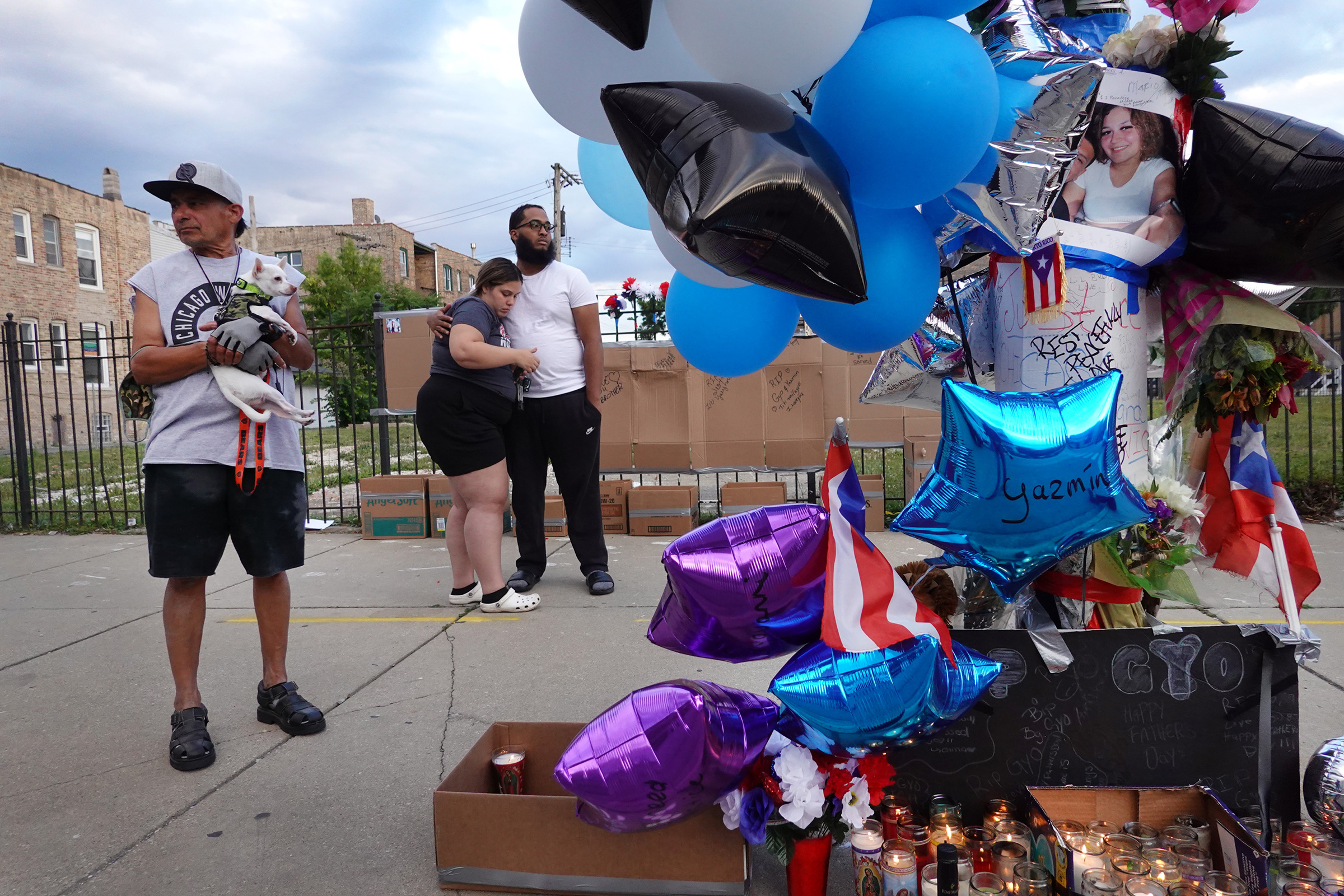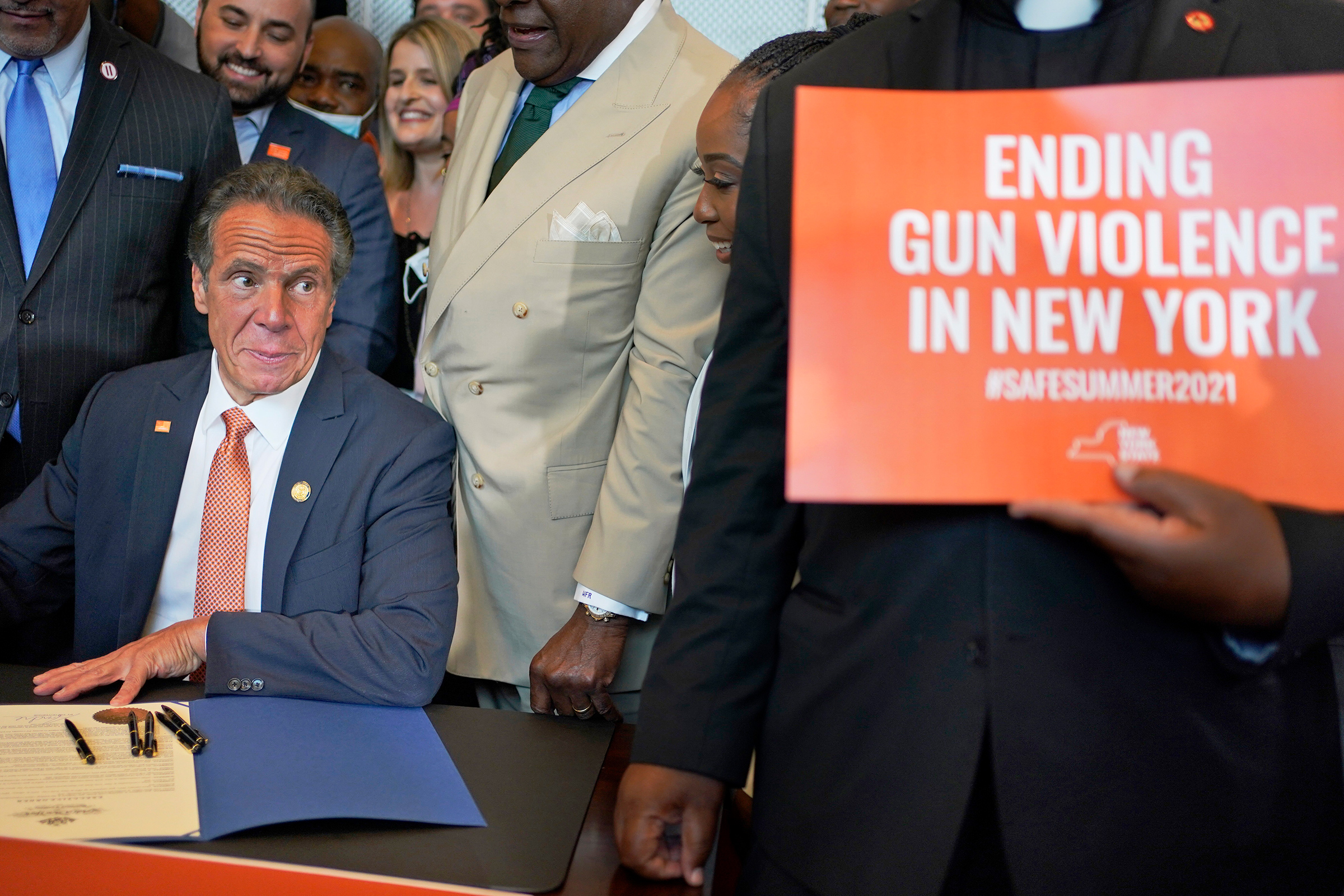
Bocanegra is the Senior Director of READI Chicago. Ford is the founder of LIFE Camp, Inc. Pastor McBride is the founder of The Way Church in Berkeley, CA and Director of LIVE FREE
More than 141 people were shot in our hometowns of Oakland, Chicago, and New York City over the July 4th weekend. The shooting victims included a 6-year old girl and her mother in the West Pullman neighborhood of Chicago, a 16-year old boy shot in the head from nearby celebratory gunfire in Oakland, and a 38-year old man checking his car for a flat tire in Queens, New York.
This staggering weekend of violence isn’t an outlier; based on an already difficult year and the violence trends we’ve seen, this could be one of the deadliest summers on record for gun violence. These tragedies and the certainty of more to come prompted Governor Cuomo of New York to declare a state of emergency around gun violence on July 6. It’s no exaggeration to say our country is in crisis. But to meet this moment, America can’t simply police our way out of the bloodshed, as the current national conversation on violence seems to suggest. Instead, we should learn from past failures and—as President Biden said in his recent speech on gun violence earlier—invest in what works: community violence intervention (CVI) programs that actually address the cycle of intergenerational poverty, violence, and trauma that drives gun violence.
The pandemic has exacerbated this vicious cycle. With economic instability on the rise, mental health and substance use struggles skyrocketing, and Americans increasingly disengaged from school and work, homicide rates in our biggest cities increased by 30%. As with COVID-19, this gun violence has taken a disproportionate toll on Black and brown communities. Even before last year, gun violence was the leading cause of death for young Black men, claiming as many lives as the next nine causes combined; now, it’s likely more.
As gun violence has surged, so too has commentary about whether public safety concerns should compel us to return to a “tough on crime” approach. State legislators across the country are calling for harsher prison sentences, including for those protesting police brutality. The leading candidate for mayor of New York, Eric Adams, called the city’s much-maligned former stop-and-frisk policy a “great tool.” Fox News pundits are claiming that turning away from “strong policing and tough sentencing” has made “urban areas unlivable, violent cesspools.”
For years, the enforcement-first policing and punitive criminal justice policies currently being proposed have hurt the same Black and brown people most affected by gun violence, leading to high rates of incarceration and excessive uses of force. Rather than reducing violence by building trust between law enforcement and residents, these policies reinforce it by hollowing out communities of economic opportunity, family supports, and a sense of safety.

There’s a better way. If we want to stop gun violence, we can’t just turn the wheel back to the enforcement-first playbook of the past, we have to break the cycle of trauma that’s driving it. Based on our combined decades of experience working on this issue, here’s what we know: the most effective way to do that is by funding CVI programs that reduce violence and the harms of the criminal justice system at the same time.
Here’s how CVI programs work: We know that people living in communities with high levels of violence experience significant levels of trauma. When young men grow up seeing their fathers, uncles or older brothers killed or jailed, that takes a psychological toll. In turn, that trauma impacts their ability to succeed in school, maintain a job, and navigate high-stress situations. This cycle builds—over years and generations—and leads to more violence. CVI programs connect people most impacted by violence with the mental health supports they need to begin to heal from complex trauma, and help them develop skills to cope in stressful, sometimes life-or-death situations.
The three of us know the impact CVI programs can have because we see it every day. READI Chicago and Oakland Ceasefire identify men who are most likely to die from gun violence and connect them to a network of resources, including trauma-informed counseling, support services, and job training. As President Biden said in this speech on Wednesday, early results show that READI participants are 40% less likely to be the victims of gun violence. And within six years of Oakland Ceasefire’s launch, the city had cut its annual homicides and non-fatal shootings by half. In New York, LIFE Camp—a program that provides educational supports, job opportunities, and mentorship to young people—has helped reduce gun violence by 10% citywide.
If CVI programs have been able to achieve such powerful results on a small scale, imagine what they could do if we invested in scaling them across the country. Promising conversations continue at the federal level, as Senator Cory Booker (D-NJ) and Representative Steven Horsford (D-NV) recently introduced legislation that would allocate $5 billion to CVI programs. But as gun violence continues to surge, our communities can’t wait—and they don’t have to. Right now, governors, mayors, and country presidents can allocate the billions of dollars they’ve received through the American Rescue Plan to invest in these programs. Governor Cuomo’s state of emergency declaration was accompanied by a nearly $139 million commitment to intervention and prevention programs in New York. Illinois and California have made similarly large investments from their ARP allocations and other jurisdictions should follow suit.
For decades, America has attempted to address gun violence by directing resources at, rather than to, communities most impacted by this crisis. We have an opportunity to change that and to actually reduce gun violence for the long-term. But to do it, we need to break the wheel.
More Must-Reads from TIME
- Donald Trump Is TIME's 2024 Person of the Year
- Why We Chose Trump as Person of the Year
- Is Intermittent Fasting Good or Bad for You?
- The 100 Must-Read Books of 2024
- The 20 Best Christmas TV Episodes
- Column: If Optimism Feels Ridiculous Now, Try Hope
- The Future of Climate Action Is Trade Policy
- Merle Bombardieri Is Helping People Make the Baby Decision
Contact us at letters@time.com